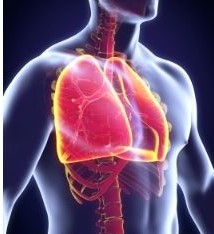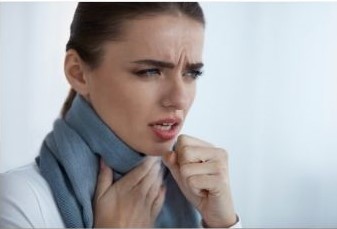Bronchitis Causes, Symptoms, Types, Treatment, Ayurveda Concept
By Dr Raghuram Y.S. MD (Ay) & Dr Manasa, B.A.M.S
Bronchi are the tubes of your respiratory system which carry air to and from your lungs. Bronchitis is an inflammation of your bronchial tubes. It can be either acute or chronic. It is a very common condition which develops following cold or other respiratory infections.
Acute bronchitis improves in quick time, often within 7-10 days although the cough may persist longer. It is also called as chest cold.
Chronic bronchitis is more serious compared to its acute counterpart. In this there is constant inflammation or irritation of the lining of bronchial tubes. This is often caused in smokers. The patient may have repeated bouts of bronchitis and needs medical attention. This condition is included in COPD (Chronic Obstructive Pulmonary Disease).
Read – Chronic Asthma Causes, Diet, Natural Remedies

Table of Contents
Causes
Acute Bronchitis – caused by viruses which cause cold and influenza. Sometimes bacteria too may be involved.
Chronic Bronchitis – usually caused by cigarette smoking. It is also caused by air pollution, dust or toxic gases.
Read – Dyspnoea – Difficulty in breathing: Causes, Pathophysiology, Diagnosis
Signs and Symptoms
- Congestion in the chest / Chest discomfort – your chest feels full or clogged
- Cough
- Production of sputum / mucus – may be clear and white, yellowish grey, green or sometimes with streaks of blood
- Shortness of breath
- Wheezing
- Fever and chills
- Fatigue
Specific features –
Acute Bronchitis – Cold symptoms like mild headache and body aches are seen in acute bronchitis. Chills, low fever, runny and stuffy nose and sore throat are also commonly found. Symptoms improve within a week or so. Cough may linger for many weeks.
Read – Ayurvedic Remedy For Common Cold And Allergy
Note: In presence of new cough, fever or shortness of breath, call your doctor to confirm or rule out COVID-19.
Chronic Bronchitis – It is defined as a productive cough that lasts for at least 3 months, with recurring bouts occurring for at least two consecutive years. Cough with clear, yellow, white or green phlegm for at least three months of the year and for more than 2 years in a row is characteristic of chronic bronchitis. Wheezing and chest discomfort are also often associated.
Read – CoronaVirus: Ayurvedic Analysis, Possible Prevention, Treatment Principles, Remedies
Right time to see your doctor
See your doctor immediately if your cough –
- Persists for more than 3 weeks
- Associated with wheezing / shortness of breath
- Associated with fever higher than 100.4 F (38C)
- Produces discolored mucus or blood
- Interferes with sleep
- Causes chest pain
- Has barking sound making it difficult to speak
- Associated with unexplained weight loss
- Associated with foul tasting in the mouth
Also call your doctor when –
- You are older person (75 years and above) and have continuous cough
- If you have COPD or if there is flare up of chronic bronchitis
Risk Factors
- Smoking
- Exposure to irritants like grains, chemical fumes, textiles etc
- Having asthma and allergies
- Gastric reflex
- Low resistance / weaker immune system – may result from other acute illness such as cold or chronic condition that compromises the immune system. Older adults, infants and young children are more vulnerable to infection.
- Family history of lung disease
Complications
Pneumonia
COPD (if there are repeated bouts of bronchitis)
Preventive measures
Avoid smoking
Wash hands frequently – to reduce risk of viral infection
Wear a surgical mask – wear mask at work if there are chances of getting exposed to dust or fumes, while in crowd or while traveling, especially if you are a patient of COPD
Vaccination – Flu vaccine taken yearly will help in getting protection from flu and hence bronchitis. Vaccines for some types of pneumonia are also available.
Read – 6 Simple Home Remedies To Stop Runny Nose
Diagnosis
Doctor can diagnose bronchitis by conducting thorough examination which also includes auscultation i.e. hearing to your lungs. Below mentioned tests may also be advised.
- Chest X-ray
- Sputum tests
- Oxygen levels in the blood
- Pulmonary function tests
Read – Ghee Home Remedy For Dry Cough
Treatment
In acute bronchitis, most cases get better in couple of weeks, sometimes even without treatment.
Antibiotics are not useful since most bronchitis have viral origin. If a bacterial infection is suspected, an antibiotic may be prescribed.
Cough medicine
Inhalers and other medications – are recommended to reduce inflammation and open the lung passages if you have allergies, asthma or COPD.
Specific recommendations in acute bronchitis –
- Drink lot of water
- Take good rest
- Pain killers to treat fever and pain
- Humidifier or steam usage
- Cough medicines
Specific recommendations in chronic bronchitis –
- Medicines – antibiotics, anti-inflammatory, bronchodilators
- Mucus clearing device
- Oxygen therapy
- Pulmonary rehab
Read – Smoker’s Cough: Symptoms, Ayurvedic Treatment, Medicines
Therapies
Pulmonary rehabilitation is a breathing exercise program which helps in chronic bronchitis. This not only helps one to breathe easily but also enhances your ability to exercise.
Lifestyle Recommendations
Use a face mask – cold air face masks protects you from cold when you go out. Exposure to cold air can aggravate your cough and cause shortness of breath.
Use humidifiers – warm and moist air helps in relieving cough and loosens phlegm in the airways and enables expectoration.
Avoid irritants – Keep away from smoking. When the air is polluted or when you are exposed to irritants, wear mask.
Avoid polluted environments
Have healthy diet to boost your immunity
Drink clear fluids to thin the mucus, like water, fruit juices, herbal tea, clear soups etc. Keep caffeine and alcohol away.
Try hot and spicy foods which help to break the phlegm and reduce the congestion. People who tolerate spices may try this.
Exercise at least 3 times per week for at least 20 minutes
Wash hands frequently
Take good rest and sleep well
Read – Diet and Ayurveda Home Remedy For Fever And Cold

Home Remedies
1. Use of Ginger
Ginger is highly effective in bronchitis. Research works have shown its anti inflammatory effects against respiratory infection.(A)
Dry ginger can be chewed. Ginger can be used with food or in the form of tea.
2. Garlic
It provides remedy for bronchitis when used in fresh form. Tolerance to garlic should be looked for. Studies have shown its inhibitory role on the growth of virus of infectious bronchitis.(B)
3. Turmeric
Apart from its multi dimensional medicinal properties, turmeric is anti-inflammatory and anti-oxidant. It can be taken made into paste with honey in the ratio of 1:2 in teaspoon measures and consumed till symptoms come down. It can be used with food and as tea or with milk until symptoms come down.(C)
4. Steaming
Steaming breaks up the mucus and enables easy expectoration. It relaxes the chest muscles. It can be taken in a hot bath, steam room, spa or a facial sauna. The easiest way is to inhale vapors from a bowl covering your head with a towel or blanket but needs to be taken with caution. Menthol, eucalyptus oil or any other decongestant may be added to the hot water.
5. Salt water gargle
Salt water gargle helps in breaking the mucus and relieves throat pain. It should be repeated often until one feels comfortable. The mouth may be rinsed with plain water after gargle.
6. Honey
Honey when consumed alone or with herbal tea helps suppress an irritating cough and soothes the throat. It can be mixed with warm lemon water also.
Yoga
Pranayama is the best for bronchitis. The other beneficial Yoga poses which can help in Bronchitis are –
- Sukhasana – Easy Pose
- Ardha Matsyendrasana – Half Spinal Twist
- Shavasana – Corpse pose
- Ardha Pincha Mayurasana – Dolphin Pose
- Uttanasana – Standing Forward Bend
- Salamba Sarvangasana – All Limbs Pose
Ayurveda understanding of Bronchitis
Bronchitis to a greater extent falls under the umbrella of Kasa i.e. cough and Svasa i.e. shortness of breath conditions explained in Ayurveda. Kasa and Svasa comprise almost all symptoms explained in Bronchitis. Since acute bronchitis is related to cold, it can also be understood on the lines of pratishyaya. Therefore from an Ayurveda lens Bronchitis can be comparatively studied with –
- Kasa
- Svasa
- Pratisyaya
- Fever
Ayurveda treatment for bronchitis too shall be given on the basis of the principles of treatment, effective formulations and dietetic recommendations made in the above said contexts. But mainly Kasa and Svasa, mainly Tamaka Svasa often compared to asthma shall be taken into consideration. Asthma is also mentioned to be a risk factor for bronchitis.
Read – Ayurvedic Home Remedy For Cough Due To Pitta Increase

Kasa as Bronchitis
Exposure to smoke, dust etc are mentioned among the causative factors of kasa.
Irritation, feeling of foreign substances and itching in the throat (hoarseness) are mentioned among the premonitory symptoms of kasa. Sore throat is associated with acute bronchitis and may appear earlier than other symptoms.
Cough with expectoration of phlegm is the chief complaint of kapha type of kasa. Cough and expectoration are predominant in bronchitis too. Cold, thick and white colored phlegm, excessive phlegm and feeling of heaviness / discomfort of chest are predominant. Kaphaja kasa can be closely correlated with chronic bronchitis though pittaja and vataja types cannot be ruled out.
When pitta is predominant, there is yellow colored expectoration, hoarseness of voice, excessive feel of heat and fumes in the chest indicative of active inflammation, fever and continuous cough.
When vata is predominant in kasa, there is excessive pain in the head and sides of the chest, hoarseness of voice, dryness of mouth and throat (irritation), weakness, dry cough and less expectoration of stubborn phlegm with difficulty.
So, bronchitis may present with clinical picture of kapha, pitta or vata predominance or all together.
Putting Kasa in the language of bronchitis:
- Kapha type of bronchitis – with expectoration of plenty of phlegm / mucus easily done, chest discomfort and heaviness. This is typically of chronic type. When cough and expectoration of phlegm is associated with cold it is of acute type.
- Pitta type of bronchitis – inflammation of the bronchi is more than in kapha, the condition may be associated with other inflammatory / pittaja conditions like hyperacidity, reflex esophagitis etc, phlegm is of green color. In acute cases fever is associated.
- Vata type of bronchitis – there is excessive dryness of the respiratory passages, less phlegm, difficult expectoration after constant coughing; bouts of cough are more and are associated with pain in the chest and throat with hoarseness of throat. This is usually a chronic picture.
Read – Charaka Kasa Chikitsa – 18th Chapter
Svasa as bronchitis
Svasa, especially tamaka svasa resembles bronchitis in its clinical picture. Looking at the pathogenesis of tamaka svasa explained in Ayurveda (Cha.Chi.21), the disease is manifested due to the retrograde / abnormal movement of vayu. This vayu when occupies channels of the body in the chest, neck and head, it shuffles the kapha therein and vitiates it. Along with kapha, this vata produces rhinitis / cold. The blocks produced by these doshas causes wheezing sounds in the chest. In the later stages the person coughs continuously and feeling tired due to that he faints. He feels comfortable once the mucus has been removed or expelled. There is also suppression of voice and loss of sleep and pain in chest and sides of chest.
Here we can see that the initial stages of manifestation of the disease resemble the clinical picture of acute bronchitis. As the disease progresses, in the later stages, it resembles chronic bronchitis. Though tamaka svasa has been compared to asthma, its presentation is also close enough to bronchitis. Even the treatment strategies explained in svasa when administered in bronchitis yield good results.
Read – Shwasa Roga – Dyspnoea: Types, Symptoms As Per Ayurveda
Extended spectrum of understanding
When bronchitis starts with cold and if the cold persists along with cough and dyspnoea / breathlessness, treatment of pratishyaya or pinasa shall be administered.
When fever, cough, dyspnea, blood coming through expectoration and hoarseness of voice, all are present in bronchitis along with dislike towards food, it shall be treated on the lines of rajayakshma.
When there is loss of weight and fatigue in bronchitis it shall be treated on the lines of ksayaja kasa or rajayaksma.
References
https://www.mayoclinic.org/diseases-conditions/bronchitis/symptoms-causes/syc-20355566
https://www.webmd.com/lung/understanding-bronchitis-basics
https://www.healthline.com/health/home-remedies-for-bronchitis#traditional-treatments
Charaka Samhita Cikitsa Sthana, Kasa Cikitsa
Charaka Samhita Cikitsa Sthana, Svasa Cikitsa
Madhava Nidana – Rajayakshma Kshata Kshina Nidana, Kasa Nidana and Svasa Nidana
Click to Consult Dr Raghuram Y.S. MD (Ayu) – Skype









